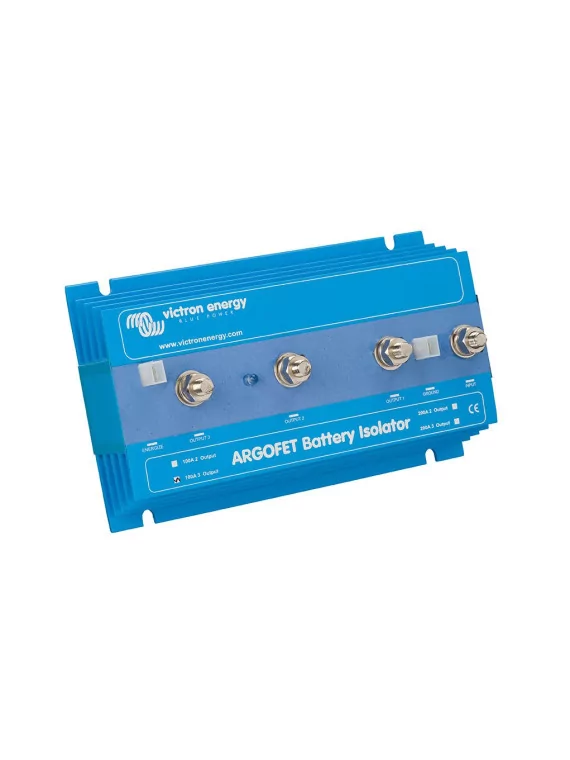Argo FET battery distributor Victron
Similar to diode battery splitters, FET splitters allow two or more batteries to be charged simultaneously from an alternator (or single-output battery charger), without the need to connect the batteries together. Unlike diode battery distributors, FET distributors have virtually no voltage loss.
Similar to conventional diode splitters, Victron Argo FET splitters enable multiple batteries to be charged from a single alternator (or single-output battery charger), without the need to connect the batteries together. Discharging the auxiliary battery, for example, will not result in discharging the starter battery.
Unlike diode splitters, FET splitters have virtually no voltage loss. Voltage drops are less than 0.02 volts for low currents, and on average 0.1 volts for higher currents.
When using ARGO FET splitters, it is not necessary to raise the alternator output voltage. However, short cables with sufficient effective cross-section should be used.
Example:
If a current of 100 A flows through a cable with an effective cross-section of 50 mm2 (AWG 0) and a length of 10 m (30 ft), the voltage drop across the cable will be 0.26 Volt. Similarly, for a current of 50 A flowing through a cable with an effective cross-section of 10 mmG (AWG 7) and a length of 5 m (15 ft), the voltage drop will be 0.35 Volt!
Alternator power input
Some alternators require a DC voltage on the B+ terminal output to start charging. Obviously, there will be DC when the alternator is connected directly to the battery. However, inserting a FET or Diode splitter will prevent any voltage/current return from the batteries to the B+ terminal, and the alternator will not start.
The new Argofet distributors have a special current-limited supply input which will supply the B+ terminal when the engine Start/Stop switch is closed.








